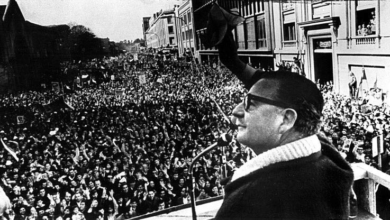In a further sign of the resilience of the people’s movement in Oaxaca, more than 20,000 people marched in Oaxaca City on Sunday, Nov. 5, to denounce state repression. Mexico’s president, Vicente Fox, unleashed thousands of riot-clad Federal Preventative Police (PFP) in the city on Oct. 28. His aim was to smash the growing people’s movement that has controlled the area since mid-June.
The march came on the heels of a people’s victory against the PFP. Led by the Popular Assembly of the People of
|
Workers, students and farmers battled the police for over six hours, throwing tens of thousands of rocks and sticks and using improvised rocket launchers against them in an organized show of force. Forced to retreat, the police shot protesters with water and dye to mark them for future arrest. The APPO reported at least 40 people injured.
This action kept the university and its radio station in the hands of the APPO. After the battle, the Mexican government sent 2,000 more police into the city.
The APPO is demanding the immediate resignation of Oaxaca’s corrupt governor, Ulises Ruiz Ortiz, a member of the Institutional Revolutionary Party (PRI), the removal of all police from Oaxaca City, and the release of political prisoners held by the Mexican government.
The Nov. 5 march brought together the APPO and its local supporters. Thousands more came by bus from other Mexican states. The action, carried out under the current police siege of the region, was a testament to the unyielding bravery and resolve of the people of Oaxaca.
La Jornada reported on Nov. 5 that at least 700 people from Mexico City came in a caravan of 12 buses and 57 vehicles to break the military cordon. Federal police tried to intimidate the supporters by “inspecting” them for arms and explosives, but they were undeterred and continued to Oaxaca.
The march route took members of the APPO and supporters from the Mexico-Oaxaca highway to the Plaza Santo Domingo in Oaxaca City. Family members of people killed by paramilitaries working for the state and the PFP were also present.
While the march was a success, an early morning shooting of a student in front of Radio Universidad reaffirms the danger still faced by the people. An APPO radio announcer confirmed that paramilitaries are creating a pattern of morning attacks.
The APPO recently denounced the morning disappearance of Blanca Canseco Méndez from Nochixtlán. Another student, Jaime Rojas Guzman, was also apprehended, along with five other unidentified people.
Additional people are missing, many of whom have not been involved in the movement, but simply passed by the area where the APPO battled the PFP on Nov. 2.
Also on Nov. 2, thousands in Mexico City marched in solidarity with the Oaxaca protesters to the head office of the PFP to denounce any further invasion of the autonomous university in Oaxaca. Solidarity protests occurred in other Mexican cities and towns and throughout the United States.
Repression met with resistance
The people’s movement had held control of Oaxaca’s city center for five months, making the city ungovernable for the ruling class. The initial spark for the escalation of the conflict came on June 14 when state police originally tried to forcibly evict striking teachers from their encampment where they had been since May 22.
The local community supported the teachers’ demands. Workers, farmers and political organizations quickly joined the struggle. They decried the lack of resources and social programs available to people in Oaxaca. They were sick of local and national political corruption and neoliberal programs. This base formed the APPO, which has demanded the resignation of Ulises Ruiz since he orchestrated the violent police attack on the teachers’ strike in June.
The nature of this class conflict became more acute when the APPO took over local television stations and a dozen
 |
The state responded by increasingly supporting paramilitary assaults and low-level warfare against the populace, specifically leaders of the APPO and those seen as key supporters.
Then, the APPO announced a general strike for Oct. 2729 in response to increased paramilitary activity that had killed four people. President Fox also used the paramilitary violence—directed and executed by the Mexican state itself—as a pretext to send the PFP into Oaxaca.
The struggle has continued to unfold in recent days with tactical retreats and victories by the APPO in the face of massive state violence and repression.
The Mexican ruling class appears to be weighing how brutal it can be to suppress the people’s movement in Oaxaca without provoking further unrest throughout the country. In addition to more police, the PFP has set up checkpoints in the city and created squads to search houses for APPO supporters.
The state’s repression is not limited to Oaxaca City. Similar police squads have been spotted in Huajuapan de León, Asunción Nochixtlán, and Yucudaa; in the Indigenous Mixteca region; and in the central valley region.
Mexico’s leaders fear that the popular rebellion could spread as Mexican working-class and world solidarity deepens.
The APPO is working hard to defend its gains and extend support for its actions. The APPO has announced it will increase barricades and take over government buildings in Oaxaca in the coming days. It is calling on supporters to do the same.






